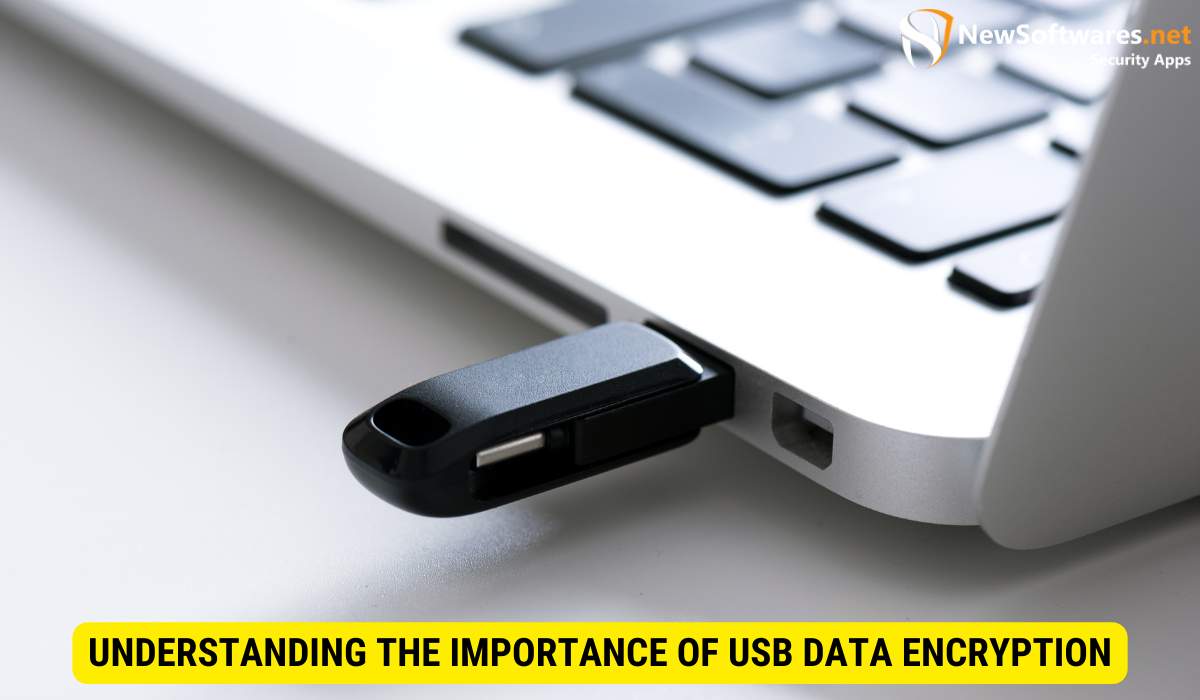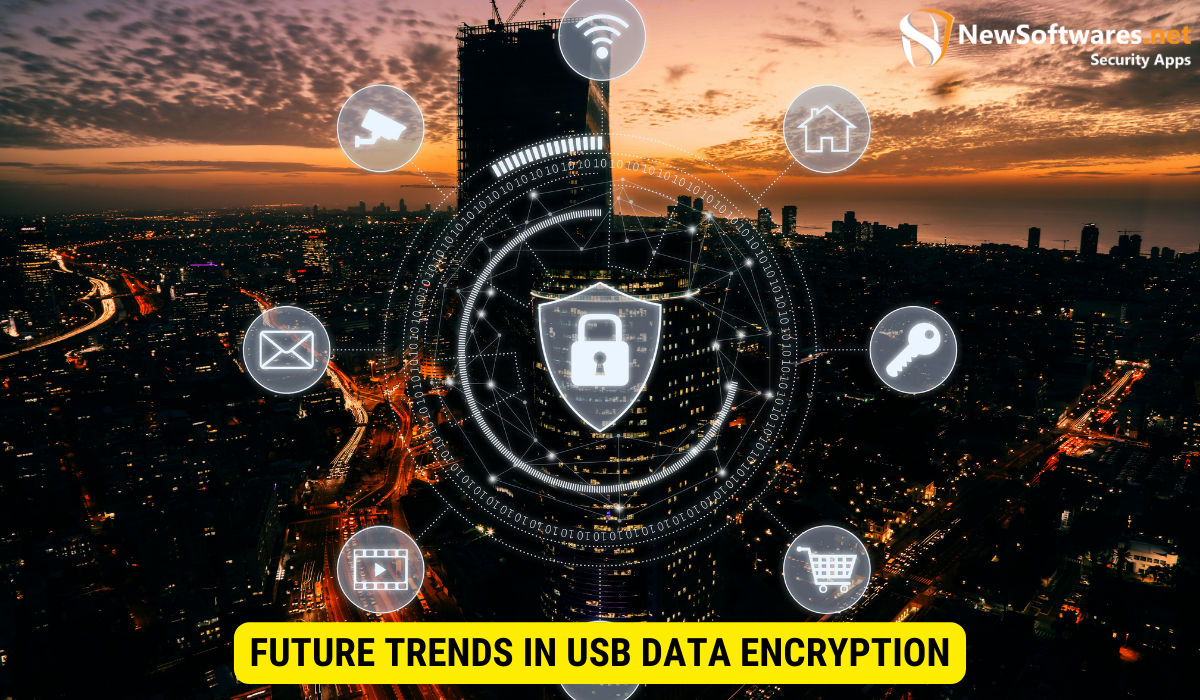Enforcing USB encryption when copying data to removable media is crucial for safeguarding sensitive information. USB data encryption involves encoding data to make it unreadable to unauthorized individuals. Different methods, such as hardware-based and software-based encryption, offer varying levels of security. The process includes assessing data sensitivity, selecting encryption methods, generating encryption keys, and training employees. While encryption may introduce a slight overhead, its benefits outweigh potential performance impacts. It is essential to store encryption keys securely and comply with legal requirements if applicable. Advancements in encryption technology and emerging security features in USB devices promise a more secure future for data protection during transfers to removable media.
In today’s digital era, data protection is of utmost importance. With the increasing use of USB devices for data transfer, the need for USB data encryption has become crucial. Together, we will go through the significance of USB data encryption, its key concepts, the process of enforcement, challenges faced, and future trends in the field.
Understanding the Importance of USB Data Encryption

In order to grasp the significance of USB data encryption, it is essential to comprehend the role of USB devices in data transfer. USB devices, like flash drives and external hard drives, have become ubiquitous in our daily lives. They offer convenience and portability by allowing us to carry large amounts of data with ease.
However, this convenience comes with potential risks. Unencrypted USB devices are vulnerable to data breaches and unauthorized access. In the wrong hands, sensitive information stored on these devices can be easily exploited, leading to severe consequences for both individuals and organizations.
The Role of USB Devices in Data Transfer
USB devices serve as a bridge between computers and external storage, enabling the seamless transfer of data. Whether it’s transferring files between colleagues, sharing important documents with clients, or simply backing up data, USB devices have become an integral part of our daily routines.
USB devices have revolutionized the way we handle data. Gone are the days of relying solely on email attachments or physical copies of files. With a simple plug-and-play mechanism, USB devices allow us to transfer large files, multimedia content, and even entire software applications effortlessly.
Moreover, USB devices have evolved to support faster data transfer speeds. The introduction of USB 3.0 and USB-C technology has significantly improved transfer rates, making it even more convenient to move large volumes of data between devices.
While their benefits are undeniable, the inherent nature of USB devices creates security vulnerabilities. These devices can be effortlessly lost, stolen, or misplaced, putting sensitive information at risk. Without proper encryption, anyone who gains access to these devices can potentially access and exploit the data stored on them.
Potential Risks of Unencrypted USB Devices
Unencrypted USB devices pose a range of risks, including:
- Data Breaches: In the event of a lost or stolen USB device, unencrypted data can be easily accessed, leading to data breaches and potential financial loss or reputational damage.
- Malware Infections: Unencrypted USB devices can become carriers for malware, allowing malicious software to spread across networks and compromise systems.
- Data Leakage: Without encryption, sensitive information can be unintentionally exposed, putting privacy and confidentiality at risk.
Imagine the scenario of a busy professional who frequently travels for work. They rely heavily on USB devices to carry important files and presentations. One day, while rushing to catch a flight, they accidentally leave their USB drive behind at a coffee shop. Without encryption, the sensitive client data stored on the USB drive is now vulnerable to unauthorized access. This simple oversight could lead to severe consequences, including legal liabilities and damage to their professional reputation.
Furthermore, unencrypted USB devices can serve as a gateway for malware infections. In a corporate setting, where employees often share USB drives to transfer files, a single infected device can compromise an entire network. The malware can spread undetected, causing significant disruptions and potentially exposing sensitive company data to cybercriminals.
To mitigate the risks, it is crucial to implement USB data encryption protocols. By encrypting the data stored on USB devices, even if the device falls into the wrong hands, the information remains unreadable and unusable without the encryption key. This provides further layer of security and ensures that sensitive data remains protected, regardless of physical device security.
Key Concepts in USB Data Encryption
Before delving into the process of enforcing USB data encryption, it is important to understand the key concepts associated with it.
Defining USB Data Encryption
USB data encryption involves the process of encoding data on USB devices to make it unreadable to unauthorized individuals. This is achieve by using cryptographic algorithms to transform the data into an encrypted form, which can only be access with the appropriate decryption key.Encryption ensures that even if a USB device is lost or stolen, the data stored on it remains inaccessible to anyone without the necessary credentials.
Different Types of USB Data Encryption
There are different types of USB data encryption methods available, each with its own strengths and limitations:
- Hardware-Based Encryption: In this method, encryption is performed by a dedicated encryption chip embedded within the USB device itself. This offers enhanced security as the encryption process is detached from the host system.
- Software-Based Encryption: With software-based encryption, the encryption process is carried out by the host system. This method relies on encryption software installed on the computer to encrypt and decrypt data on the USB device.
Both methods have their pros and cons, and the choice of encryption method depends on factors such as cost, convenience, and level of security required.
The Process of Enforcing USB Data Encryption
Enforcing USB data encryption involves a series of steps to ensure that data is protected during transfer and storage.
Steps to Implement USB Data Encryption
- Assess Data Sensitivity: Identify the types of data that require encryption. Classify data based on its level of sensitivity and importance.
- Select Encryption Method: Choose the appropriate type of USB data encryption method based on the level of security required and the specific needs of your organization.
- Implement Encryption Software/Hardware: Install and configure the encryption software or hardware on the host system and USB devices to ensure compatibility and secure communication.
- Generate Encryption Keys: Generate strong encryption keys that are complex and unique to each USB device. Store these keys securely to prevent unauthorized access.
- Train Employees: This Educate employees about the importance of USB data encryption and provide training on how to properly use encrypted USB devices.
Tools for Enforcing USB Data Encryption
There are several tools available that can aid in the enforcement of USB data encryption. These tools provide features such as central management, device tracking, and policy enforcement, enhancing overall security and control over USB data transfer.
Some notable tools include:
- Endpoint Security Solutions: These solutions offer comprehensive security measures to protect endpoints, including USB devices, from potential threats.
- Data Loss Prevention Solutions: These solutions help identify and prevent unauthorized data transfers, ensuring that data remains encrypted and protected while in transit.
Challenges in USB Data Encryption Enforcement
While USB data encryption offers a powerful safeguard against data breaches, there are challenges that organizations face when enforcing encryption protocols.
Common Obstacles in Data Encryption
- Resistance to Change: Employees may be resistant to adopting new encryption measures, perceiving them as cumbersome or time-consuming.
- Lack of Awareness: There may be a lack of alertness among employees about the importance of data encryption and the potential risks associated with unencrypted USB devices.
- Complexity: Implementing encryption protocols can be complex, requiring technical expertise and compatibility considerations.
Overcoming Encryption Enforcement Challenges
To overcome these challenges, organizations can take the following steps:
- Employee Education: Provide training sessions and awareness campaigns to educate employees about the significance of USB data encryption.
- User-Friendly Solutions: Implement encryption solutions that are user-friendly and do not disrupt workflow, making it easier for employees to adopt the new measures.
- Continuous Evaluation: Regularly assess the effectiveness of encryption measures, review policies, and update encryption software to stay ahead of evolving threats.
Future Trends in USB Data Encryption

The field of USB data encryption is constantly evolving to address emerging threats and enhance data protection. Several future trends are worth noting.
Innovations in Encryption Technology
Encryption technology continues to advance and adapt to the ever-changing landscape of data security. Innovations such as quantum-resistant encryption algorithms and homomorphic encryption are gaining traction, offering enhanced protection against sophisticated attacks.
The Impact of Emerging Technologies on USB Data Encryption
New technologies, such as USB Type-C and USB 4.0, are not only increasing data transfer speeds but also introducing enhanced security features. These developments provide opportunities for more robust encryption protocols and improved data protection.
Key Takeaways
- USB data encryption is crucial for safeguarding sensitive information stored on USB devices.
- USB devices play a significant role in data transfer but come with potential risks if left unencrypted.
- USB data encryption involves the process of encoding data to make it unreadable to unauthorized individuals.
- Different types of USB data encryption methods, such as hardware-based and software-based encryption, offer varying levels of security.
- Implementing USB data encryption requires assessing data sensitivity, selecting encryption methods, generating encryption keys, and training employees.
FAQs
Can I use any USB device for data transfer without encryption?
It is strongly recommended to use encrypted USB devices for data transfer to ensure that sensitive information remains protected, especially when dealing with confidential or personal data.
How do I know if my USB device is encrypted?
Encrypted USB devices typically require you to enter a password or other credentials to access the data stored on them. If you are unsure, consult the device documentation or manufacturer specifications.
Can encryption slow down data transfer speeds?
Encryption may introduce a slight overhead, but modern encryption algorithms and hardware advancements have minimized this impact. In most cases, the benefits of encoding outweigh any potential performance impact.
What happens if I lose the encryption key for my USB device?
If you lose the encryption key for your USB device, you may not be able to access the encrypted data stored on it. It is vital to store encryption keys securely and have contingency plans in place to recover or reissue keys if necessary.
Are there any legal requirements for USB data encryption?
Depending on the industry and regulations governing data protection, specific legal requirements may exist for the encryption of sensitive information. It is important to stay informed about applicable laws and regulations to ensure compliance.
Conclusion
USB data encryption is a crucial aspect of data protection, particularly when it comes to safeguarding sensitive information stored on USB devices. By understanding the importance of USB data encryption, key concepts, the process of enforcement, challenges faced, and future trends in the field, organizations can take preventive measures to mitigate risks and protect valuable data.
